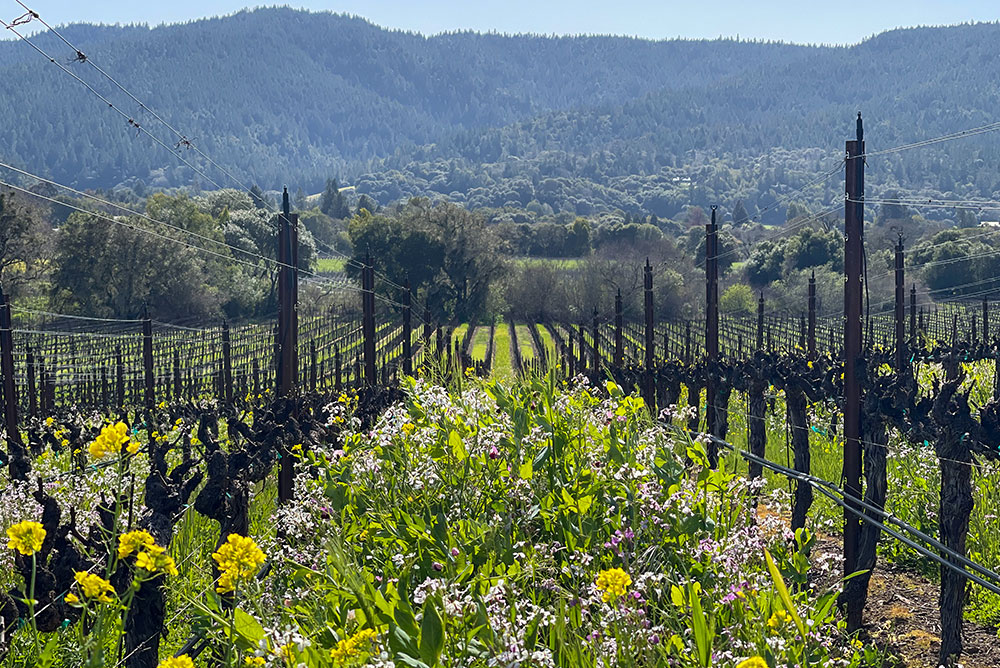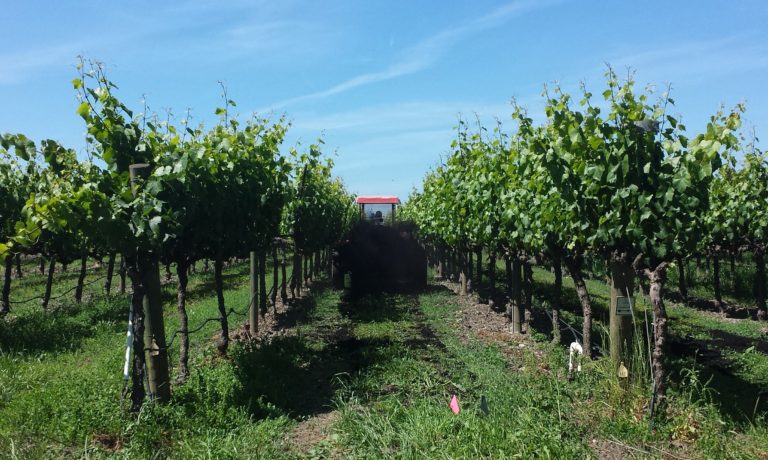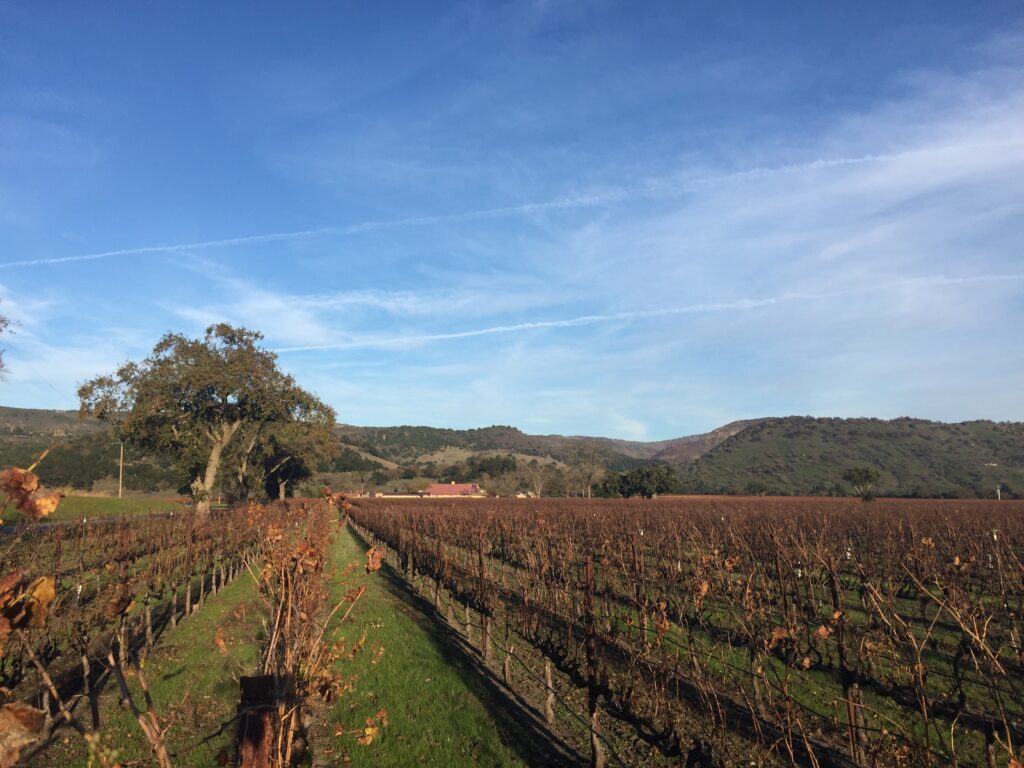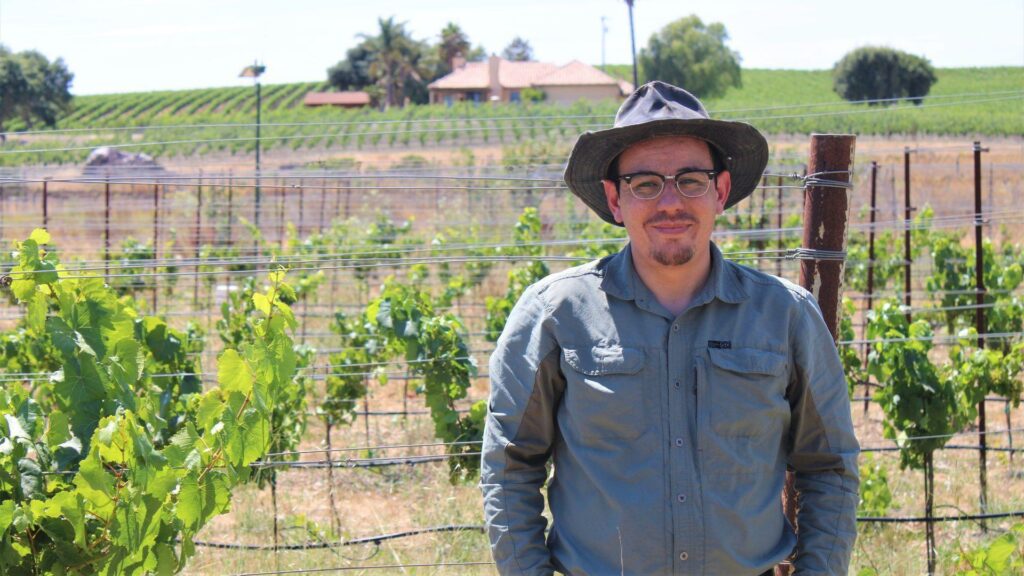
Ferrington Vineyard Field Trial
Norman Kobler, manager and co-owner of Ferrington Vineyards, was one of the first to participate in the North Coast Soil Health Hub.

Vineyard floor management in vineyards across Sonoma County typically varies between full (all-row) tillage, alternate-row tillage, and no-till, which is often dependent on the age and vigor of the vine and rootstock. Additionally, site topography, soil depth, microclimate, frost risk, weed and pest pressure can also play a role in deciding what tillage methods are used. Compost application is also a common practice for providing nutrients to the vines but is often tilled in after application.
The objective of this demonstration is to compare how different tillage frequency interacts with compost application and how it may influence soil health, vine productivity, and soil carbon sequestration. The primary soil health indicators being monitored include total organic carbon, bulk density, water infiltration, and water holding capacity. Vine health, productivity, and economic considerations are also being tracked by the vineyard team, including pre-harvest cluster counts and data analysis post-harvest.
Each tillage system listed above has compost applied on half of the plots.
Soil map unit(s): Yolo sandy loam, overwash, 0 to 5% slopes
Available water capacity (according to soil survey): Depth to root restrictive layer: 20-40”
Well drained. Low water movement in restrictive layer. These soils are typically deep and well drained with a low shrink-swell potential.
Slope: 0-2%
Surface texture (according to soil survey): sandy loam
Grape variety and clone: Pinot Noir, clones include: 4, 29, 777
Chardonnay, clones include: 4, 17, 96
Grape rootsocks: 5C, SO4, 110R, 101-14
Vine spacing: 12’ between rows, 6’ between vines
Vine age: Planted in 1997-98
Irrigation system: Drip irrigation
Other (e.g. disease or pest issues): Organic matter content in surface horizon is around 3%.
Prior to the onset of this field study, the vineyard floor was maintained in a grass cover with every other row tilled and planted annually in fall with a cover crop mix, typically 40 percent barley, 40 percent annual rye, and 20 percent crimson clover. Compost application is a new practice in the field study blocks. Cover crops continue to be planted in the field study area, utilizing a no till drill for the untilled areas. Fertilizers (calcium, zinc, boron, seaweed, and humic acid) are applied based on visual observations and data from spring soil samples and petiole samples collected at half-bloom in late spring/summer. Liquid fertilizers are applied through the drip irrigation system.
Two vineyard blocks were selected for this demonstration – one with Chardonnay grapes and the other with Pinot Noir. The study area is broken out into field plots with different tillage frequencies. Each field plot includes three vinerows and four adjacent tractor rows. Tractor rows are managed using either no till, alternate year till or full till. Half the plot receives an annual spring application of compost at approximately 5 dry T/AC. Each field plot extends along the entire length of the vineyard rows and is repeated 3 times in each vineyard block, to conduct statistical analysis of the data gathered. In all, there are 36 field plots on over 22 acres of grape vines.
5 field seasons
| Variable | Sampling Approach | Timing |
|---|---|---|
| Field operations and management issues | Vineyard Manager keeps log of activities | Annually |
| Infiltration (single ring) | Single ring infiltrometer sampled by Sonoma RCD or SRJC students | Fall/Winter (dependent on soil moisture) |
| Yield (cluster number & weight per vine) | Sample 6 vines per plot. | Ahead of harvest |
| Soil organic matter, bulk density, texture, etc. | Soil samples collected from each tractor row and in vinerow in each field plot at 2 depths: 0-10 cm (0-4”) and 10-20 cm (4-8”) | Baseline samples collected in Spring 2018. Samples collected annually in spring for 5 years. |

Norman Kobler, manager and co-owner of Ferrington Vineyards, was one of the first to participate in the North Coast Soil Health Hub.

Napa County Gamble Ranch is operated by Treasury Wine Estates and is located within the Oakville AVA in the middle of Napa Valley. The ranch

Napa County Huichica Creek Sustainable Demonstration Vineyard is managed and owned by Napa County Resource Conservation District. Miguel Garcia, NCRCD Sustainable Agriculture Program Manager manages
Our quarterly publication is full of curated and self-published articles sharing our experience, achievements, noteworthy field news, helpful tips, tutorials, and more.